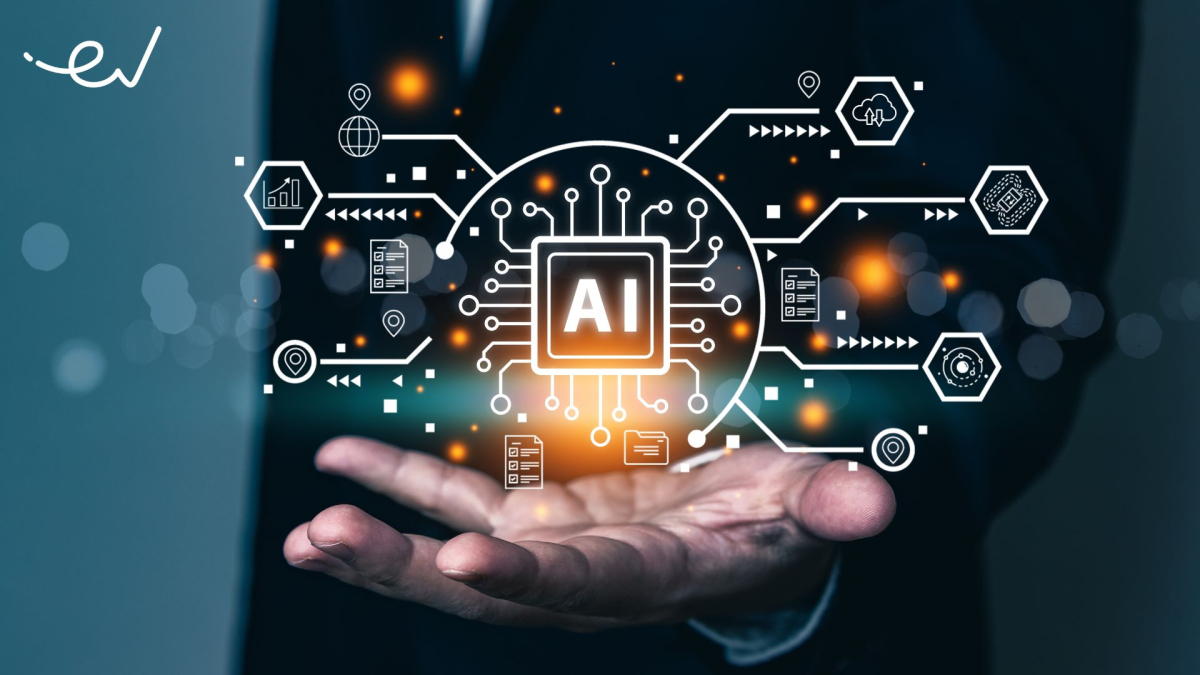Telecom
Six Menacing AI Threats List You Need to know

By the end of this year already, the market for artificial intelligence (AI) in South Africa is projected to reach a size of $2.4 billion, showing an annual growth rate of 21% between now and 2030. Locally, the technology has the potential to mitigate security risks, enhance decision-making, address legacy challenges, and have a significantly positive societal impact. Despite the impressive applications and implications, Anna Collard, SVP Content Strategy & Evangelist at KnowBe4 AFRICA, warns of the associated risks that need to be considered.

“Generative AI models are trained on data from various sources,” she explains, highlighting that these sources are not all verified, lack sufficient context, and are not regulated. “AI is incredibly helpful in handling the mundane administrative tasks associated with spreadsheets and statistics. However, it becomes concerning when we rely on it to make decisions that have the potential to influence people’s lives.”
AI is an algorithmic construct built on the bones of human creative endeavours and data that is often flawed and biased. “As Kate Crawford, a professor at the University of Southern California and Microsoft researcher, pointed out, AI is not truly artificial or intelligent. This poses risks that can have long-term consequences if users are unaware of them,” explains Collard.
Here are six of the most concerning risks:
01: AI hallucinations: Earlier this year, a New York attorney used a conversational chatbot for legal research. The AI deceitfully incorporated six fabricated precedents into his filing, falsely attributing them to prominent legal databases. This is a perfect example of an AI hallucination, where the output is either fake or nonsense. These incidents happen when prompts are outside of the AI’s training data and so the model hallucinates or contradicts itself in order to respond.
02: Deepfakes: The implications of fake images extend to various areas. With the rise of fake identities, revenge porn, and fabricated employees, the range of potential misuse for AI-generated photographs is expanding. One particular technology called Generative Adversarial Network (GAN) is a type of deep neural network capable of producing new data and generating highly realistic images by using random input. This technology opens up the realm of deepfakes, where sophisticated generative techniques manipulate facial features and can be applied to images, audio, and video. This form of digital puppetry carries significant consequences in political persuasion, misinformation or polarization campaigns.
03: Automated and more effective attacks: This taps directly into the potential of GAN mentioned before, as cybercriminals make use of deepfakes in more sophisticated attacks. They use it in impersonation attacks, where fake voice or even video versions of someone can be used to manipulate victims into paying or following other fraudulent instructions. Cybercriminals also benefit from jailbroken generative AI models to help them automate or simplify their attach methods, such as for example automating the creation of phishing emails.
04: Media equation theory: This refers to the fact that human beings have a tendency to attribute human characteristics to machines and develop feelings of empathy towards them. This tendency becomes even stronger when the interactions with machines seem intelligent. Although this can positively impact user engagement and support in the service sector, it also carries a risk. People become more vulnerable to manipulation, persuasion, and social engineering because of this over-trust effect. They tend to believe and follow machines more than they should. Research has shown that people are likely to alter their responses to queries in order to comply with suggestions made by robots.
05: The manipulation problem: AI, through the use of natural language processing, machine learning, and algorithmic analyses, can both respond to and simulate emotions. By gathering information from various sources, agenda driven AI chatbots for example can promptly react to sensory input in real time and utilise it to accomplish specific objectives, such as persuasion or manipulation. These capabilities create opportunities for the dissemination of predatory content, misinformation, disinformation, and scams.
06: Ethical issues: The presence of bias in the data and the current absence of regulations regarding AI development, data usage, and AI application all raise ethical concerns. Global efforts are underway to tackle the challenge of ethics in AI and reduce the risks of AI poisoning, which entails manipulating data to introduce vulnerabilities or biases. “However, South Africa currently lacks momentum in addressing these issues. This must change, as managing and detecting the risk of polluted AI data before it causes long-term harm is essential.” Says Collard.
“It is important to be mindful of the information we share with AI chatbots and virtual personal assistants. We should always question how our data is being used and by whom,” concludes Collard. “There is a risk of sharing sensitive personal and business information with data training models.
“While AI is a valuable tool, it is crucial to use it with critical thinking and mindfulness, and only rely on it in situations where it provides the most value and has been fact checked.”
Telecom
Mart Networks Rolls Out Tailored Cybersecurity Solution for Fintechs

Mart Networks, a leading cybersecurity distributor across Africa and the Middle East, has unveiled a specialized cybersecurity package tailored for fintech firms.

The solution, powered by Invinsense, Infopercept’s unified cybersecurity platform, aims to address the growing security needs of fintechs operating in highly regulated environments.
According to Moiz Maloo, Managing Director at Mart Networks, fintech companies face unique security challenges due to stringent regulatory requirements and increasing threats. “Most fintechs don’t have the luxury of multiple internal security teams or system integrators. With this focused offering, we’re providing an all-in-one platform with managed services built specifically for the fintech environment,” he said.
The offering integrates four key components: Invinsense XDR and Managed Detection & Response for real-time monitoring, Exposure Management for vulnerability detection, Security Compliance Management to support fintechs in meeting regulatory standards, and Cybersecurity Awareness Programs to empower teams against cyber threats.
Furthermore, the package includes deep application visibility, ensuring fintech-specific applications remain secure through Invinsense SIEM’s custom log ingestion capabilities. To reinforce protection, Infopercept’s engineering team will provide code-level fixes, patches, and infrastructure security enhancements.
With the rise of cloud-based fintech operations, the solution also incorporates full-stack cloud security, including API security, Cloud Infrastructure Entitlement Management (CIEM), and Application Security Posture Management (ASPM).
Mart Networks’ move underscores the growing importance of cybersecurity in Africa’s fintech sector, as financial services become increasingly digital and susceptible to evolving cyber threats.
Telecom
Equinix Expands Digital Footprint in Nigeria with Launch of LG2.3 Data Center

Equinix, Inc. the world’s digital infrastructure company™, has officially opened its latest data center expansion in Lagos. Called LG2.3, the facility will support Nigeria’s growing digital transformation efforts, providing state-of-the-art colocation and secure interconnection solutions which will empower businesses across the region.

It also signifies Equinix’s unwavering dedication to advancing Nigeria’s position in the global digital economy, reinforcing the company’s commitment to the region.
As part of the inauguration, Bruce Owen, President of EMEA at Equinix, along with other Equinix executives, led the ribbon-cutting ceremony at the newly expanded site. In addition to an official visit to the Governor of Lagos State, Equinix hosted an exclusive customer engagement event, bringing together key customers and partners from Nigeria’s business and technology sectors.
Attendees discussed shared successes and Equinix’s role in facilitating digital transformation, while also connecting directly with Bruce Owen for insights into how Equinix’s solutions drive innovation and business agility in the region.
Equinix executives also took part in a tree-planting ceremony, symbolising Equinix’s continued investment in sustainable initiatives across the globe and highlighting the company’s broader goal of reducing its carbon footprint while supporting greener practices across its operations worldwide.
Speaking about the expansion, Bruce Owen, President of EMEA at Equinix said “Nigeria is a crucial market for Equinix. Today’s opening is a clear demonstration of our continued commitments to invest and grow digital infrastructure that will benefit the many thousands of businesses in Nigeria and on the continent as a whole.
“I am deeply encouraged by the enthusiastic partnerships and innovations emerging from this dynamic region, which continue to inspire our commitment to Nigeria’s digital and sustainable future.”
Adding to this, Wole Abu, Managing Director of Equinix West Africa, highlighted the critical role of data centers in driving economic growth stating “Data centers continue to play a pivotal role in driving economic development in Nigeria, serving as critical infrastructure that supports digital transformation and economic growth.
“As governments and enterprises increasingly acknowledge their significance, global demand for data center capacity is poised to rise. While Africa’s demand for data solutions is still evolving compared to more mature markets, the continent is demonstrating strong potential for digital adoption and innovation.
“To meet this growing need, Equinix is actively advancing three major data center projects in Nigeria, with future expansion plans for Ghana, Côte d’Ivoire, and South Africa.”
Equinix remains steadfast in its mission to enable secure, scalable, and sustainable digital growth for economies across the world.
Telecom
African Women Hit Hardest as Mobile Internet Gender Gap Persists

African women remain among the most digitally excluded globally, with smartphone affordability and digital literacy among the key barriers. New data from the 2025 GSMA Mobile Gender Gap Report, launched recently, reveals a persistent global gender gap in mobile internet use across low- and middle-income countries (LMICs).

It further notes that literacy, digital skills, safety, and affordability of data also remain critical barriers. The report highlights that 885 million women across these regions still do not use mobile internet, with nearly 60% of them living in Sub-Saharan Africa and South Asia.
While mobile internet is the primary way women in LMICs access the internet, offering critical lifelines to health, education, and financial services, the pace of female adoption has stalled, leaving 235 million fewer women than men connected.
Claire Sibthorpe, head of digital inclusion at GSMA, highlighted that the gender gap had narrowed significantly between 2017 and 2020, but progress flatlined in recent years.
Although 2023 brought a slight improvement, restoring the gap to 15%, 2024 saw minimal change, with the gap settling at 14%.
The disparity is most severe in Sub-Saharan Africa, where women are 29% less likely than men to use mobile internet.
“It’s disheartening that progress in reducing the mobile internet gender gap has stalled. The digital divide is driven by deep-rooted socio-economic and cultural factors that disproportionately impact women,” said Sibthorpe.
GSMA projects that closing the gender gap by 2030 could add $1.3 trillion to GDP across LMICs and deliver $230 billion in revenue to the mobile industry.
The report, funded by the UK FCDO, Sida, and the Gates Foundation, stresses the urgent need for targeted investment and policy action to bridge the digital divide and ensure that no woman is left offline.
“The mobile internet gender gap is not going to close on its own. It is driven by deep-rooted social, economic, and cultural factors that disproportionately impact women,” said Sibthorpe.

 E-Financial2 days ago
E-Financial2 days agoAccess Holdings Sets Benchmark in Fraud Prevention With ₦193.5Bn Tech Investment

 E-Financial2 days ago
E-Financial2 days agoMTN’s Digital Lending Arm Disburses $592m Loans in Q1

 E-Financial2 days ago
E-Financial2 days agoAccess Bank, Deloitte Partner to Equip SMEs with Tools for Growth

 News2 days ago
News2 days agoSERAP Asks Ojulari, NNPC CEO to Account for Missing N500Bn or Face Legal Action

 E-Financial2 days ago
E-Financial2 days agoFG Verifies 2m Households for Cash Transfer

 E-Business2 days ago
E-Business2 days agoFG Launches Online Citizenship, Business Management Platform

 Telecom2 days ago
Telecom2 days agoEquinix Expands Digital Footprint in Nigeria with Launch of LG2.3 Data Center

 General News2 days ago
General News2 days agoNOTAP Urges South Eastern Entrepreneurs to Embrace Franchising as Business Model




























